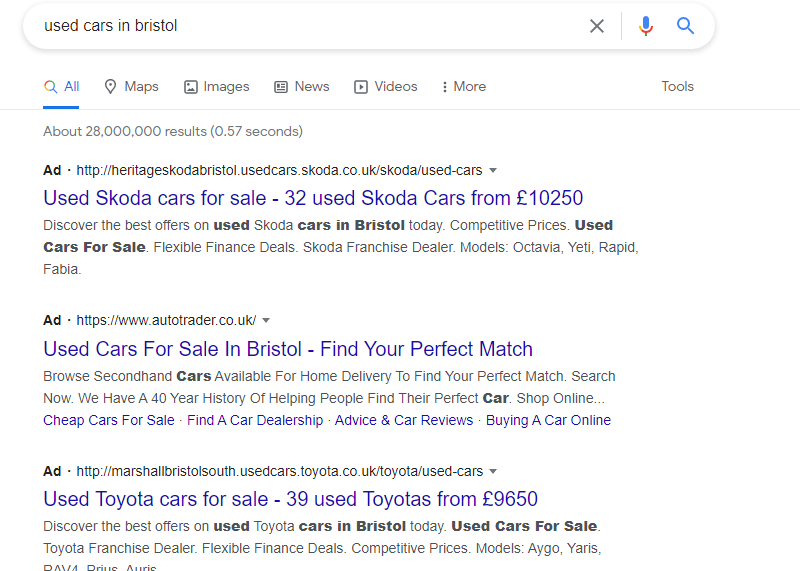Do you know there are enormous job opportunities in digital marketing since the budget in this industry is enormous and expected to grow over time. Let’s know a few basics of digital marketing.
What is digital marketing?
It doesn’t matter how much worthy or valuable a product or service is unless potential customers get interested in that product or service and purchase it. Digital marketing of a product or service is reaching targeted customers using online channels and electronic devices, making them interested in that product or service, and finally converting them (at least a few of them) into purchasing customers. A good example of digital marketing is using social media to reach a pool of customers and sell a product or service.
What are the different types of digital marketing?
There are various forms of digital marketing out there. Let’s know 8 mainstream digital marketing briefly.
SEO
SEO or search engine optimization is a marketing tool, rather than marketing itself. The main objective of SEO is to make a web page attractive so it achieves the highest possible ranking.
SEO is a science because it requires SEO specialists to research different contributing factors which are responsible for making a post or article get the highest ranking in SERP or search engine result page. These contributing factors are content quality, level of user engagement, mobile-friendliness, and the number and quality of inbound links.
The most challenging side of SEO is there is no specific set of rules that implementing in a webpage will ensure it’s the highest possible ranking. In addition, Google changes its algorithm quite frequently. These two factors make SEO further complicated. What SEO specialists do is monitor pages performance and then adjust accordingly.
Content marketing
Content marketing is a marketing strategy. This strategy involves creating and distributing relevant and valuable content of your product or service in the form of blogs, videos, newsletters, social media posts, or emails to potential customers. These contents convey expertise and provide answers to the audience’s general query. The goal of these contents is to make and retain a relationship with customers. The advantage of this relationship is when customers buy a product, it is highly likely that they will choose your product or service.
Social media marketing
Social media marketing is creating specialized content for each social media platform to prompt engagement and promote brand awareness. Since the goal of social media marketing is customers’ engagement and brand promotion, social media marketers may exclude direct-purchase while planning for a social media marketing strategy.
Affiliate marketing
Affiliate marketing works on the revenue share model. In affiliate marketing, you could be either a promoter or a business owner. But the process is the same whether you choose to become a promoter or a merchant. What happens in affiliate business if you choose to become a promoter. You promote a company’s product or services often on a website. If that product or service sells from your site, you earn a commission from the company. On the other hand, if you own a business, you could find a promoter who would promote your business on your behalf. In this case, if a purchase case has taken place, you need to pay a commission to the promoter.
Email marketing
The concept of email marketing is simple. It involves sending a promotional message to a list of contacts who have given their permission to receive emails from you. Though the process sounds simple, but the difficult part of email marketing is you have to gather a list of contacts who wanted to get your email. To make an email list containing the name of the interested subscribers and their email address, you need to place an email sign-up form on your blog, website, landing page, or social media so that the audience can voluntarily opt in the get your promotional message. You can’t send email without the user’s permission because that would violate data protection law. Moreover, you would be identified as spammers which will hamper your brand reputation. The objective of email marketing is to inform your contacts, drive sales, and build a community around your brand.
Pay per click marketing
PPC or pay per click is an online advertising model. In this model, an advertiser pays a fee to a search engine like google whenever someone clicks on a sponsored link or paid link that appears on SERP or search engine result page.
However, how a paid link will appear and in which order is a bit more complicated. Paid links appear in SERP when someone performs a search to buy something. For example, one wants to buy a used car and wrote: “ used cars in Bristol”. He may see the following search result in SERP. At the top of this search, a few links appear with the word Ad along with other search results.


The links that appear with the word Ad are paid links. After clicking on a paid link, to meet the target of a PPC campaign, the traffics need to perform one or more actions. One action could be purchasing a product or calling the home office. In a PPC campaign, either action is considered that a conversion has been done.
To understand how ad links appear and in which order, one needs to understand the role of keywords In a PPC campaign, Keywords or phrases are what people type on a search engine to buy a product or get information about something. As different people can write different things while looking for a product, a particular product may have several keywords or phrases ( but these words or phrases are closely related to the product). While people do a search, these keywords underwent a bidding system or Ad auction that determines which link will appear first, and which will follow. Ad auction or bidding system is A complex algorithmic calculation of a search engine. Among many other things, the relevancy of keywords is one of the most important things that a search engine’s algorithm gives priority to while doing an algorithmic calculation.
Native advertising
Native advertising is another paid content that provides the same value to the audience as organic content. The difference between paid content and organic content is that the publisher of the native ads clearly let’s know readers that they are reading promoted content so that the audience doesn’t get annoyed by discovering that someone is trying to persuade them to read or view paid content so that they buy something. In a nutshell, native advertising is not blatant marketing like banner ads or display ads since many consumers believe that these traditional ads are biased and so they become resistant to these ads.
Marketing automation
Marketing automation is the use of technology to automate the entire marketing process from initial customer interaction to after-sale customer support. The emergence of marketing automation is to simplify some of the most time spending tasks of modern marketing and sales like automating the lead generation process and creating a hub for a digital marketing campaign. In this 21st century, the business world has become far more complex and competitive. To cope with such competition and complexity, implementing marketing automation strategy in business is becoming essential.
Advantages of digital marketing
Unlimited Geographic reach
In digital marketing, you can reach an audience living in every corner of the world ( unless you impose some restriction regarding who can see your Ad or who will be left out. This makes the expansion of business unimaginably easier.
Cost-efficient
Digital marketing can not only reach a wider audience, but it is also less expensive than traditional marketing like running an Ad on television or posting an ad in a newspaper. In addition, there is no guarantee that your Ad will reach your target audience when you utilize traditional media, here is another big advantage of digital marketing- reaching targeted customers. With email marketing, for example, you can send messages only to your interested customer, not everyone.
Quantifiable results
Determining the success or failure of your marketing strategy requires you to figure out how many customers the strategy attracts and how much revenue it ultimately drives to your coffer? But is it possible in traditional marketing like running an ad of a product on television and then determining how many viewers see it and how many customers buy the product? However, in digital marketing result tracking is not a big deal. Digital marketing software and platforms can automatically track the number of desired conversions whether that conversion means the number of people open your email, the number of traffic visits your home page or the number of people buys your product.
